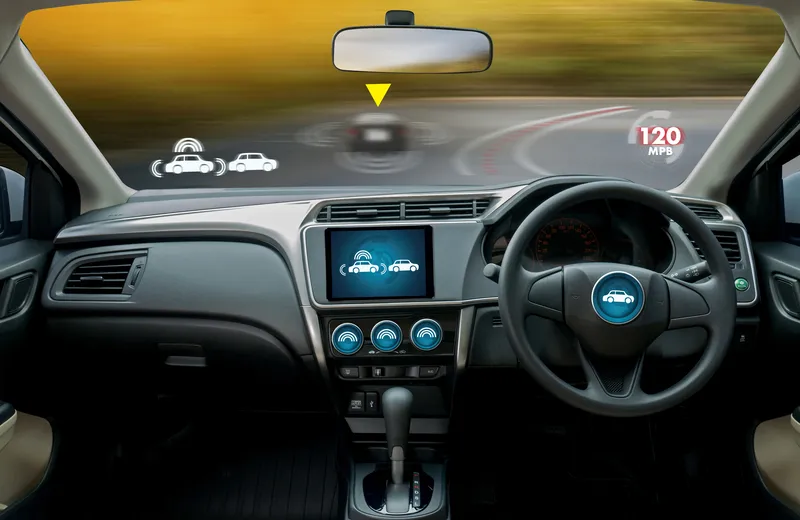As part of an effort by policymakers to make better use of the nation’s airwaves, Congress last year directed the National Telecommunications & Information Administration (NTIA) to examine the potential for spectrum sharing in the 5.4 GHz and 5.9 GHz bands, the latter of which was set aside by the Federal Communications Commission (FCC) in 1999 for the development of connected vehicle technology. On January 25, the NTIA issued an initial report expressing concern about the potential interference risks asso
April 16, 2013
Read time: 2 mins

As part of an effort by policymakers to make better use of the nation’s airwaves, Congress last year directed the National Telecommunications & Information Administration (NTIA) to examine the potential for spectrum sharing in the 5.4 GHz and 5.9 GHz bands, the latter of which was set aside by the 2115 Federal Communications Commission (FCC) in 1999 for the development of connected vehicle technology.
On January 25, the NTIA issued an initial report expressing concern about the potential interference risks associated with allowing a substantial number of new, unlicensed devices to operate in the 5.9 GHz band, and proposing a technical evaluation process to determine whether and how the multiple risk factors could be mitigated.
On April 10, the FCC proceeded to publish a Notice of Proposed Rulemaking seeking to open up the 5.4 and 5.9 GHz bands to unlicensed devices. ITS America and other connected vehicle stakeholders will be submitting comments to the FCC raising their concerns with the proposal (which have been expressed previously in an ITS America-led coalition letter to the FCC Chairman).
Attendees to the ITS America Annual Meeting & Exposition who would like to learn more are encouraged to attend a special session from 8:00 – 9:15am on Wednesday, April 24 in Ryman Studio O of the Gaylord Opryland Hotel and Convention Center titled “Wi-Fi Expansion and the Future of Connected Vehicle”.
The session will explore the feasibility of spectrum sharing in the 5.9 GHz band, focusing on the risk factors, potential benefits, and possible technical solutions; as well as next steps for working with the FCC, NTIA, US DOT and stakeholder community to figure out if there is a win-win scenario that would protect the connected vehicle program while allowing for expanded Wi-Fi services. The session, moderated by ITS America’s Paul Feenstra, Senior Vice President for Government and External Affairs, will feature presentations by Charles Glass of the National Telecommunications and Information Administration (NTIA) who will discuss the initial results of NTIA’s study on the potential for spectrum sharing in the 5.9 GHz band; Tom Schaffnit, President of the VII Consortium; Mary Brown, Director of Government Affairs at Cisco; and John Maddox, Director of Collaborative Program Strategies at the University of Michigan Transportation Research Institute (UMTRI) and Texas A&M Transportation Institute (TTI).
On January 25, the NTIA issued an initial report expressing concern about the potential interference risks associated with allowing a substantial number of new, unlicensed devices to operate in the 5.9 GHz band, and proposing a technical evaluation process to determine whether and how the multiple risk factors could be mitigated.
On April 10, the FCC proceeded to publish a Notice of Proposed Rulemaking seeking to open up the 5.4 and 5.9 GHz bands to unlicensed devices. ITS America and other connected vehicle stakeholders will be submitting comments to the FCC raising their concerns with the proposal (which have been expressed previously in an ITS America-led coalition letter to the FCC Chairman).
Attendees to the ITS America Annual Meeting & Exposition who would like to learn more are encouraged to attend a special session from 8:00 – 9:15am on Wednesday, April 24 in Ryman Studio O of the Gaylord Opryland Hotel and Convention Center titled “Wi-Fi Expansion and the Future of Connected Vehicle”.
The session will explore the feasibility of spectrum sharing in the 5.9 GHz band, focusing on the risk factors, potential benefits, and possible technical solutions; as well as next steps for working with the FCC, NTIA, US DOT and stakeholder community to figure out if there is a win-win scenario that would protect the connected vehicle program while allowing for expanded Wi-Fi services. The session, moderated by ITS America’s Paul Feenstra, Senior Vice President for Government and External Affairs, will feature presentations by Charles Glass of the National Telecommunications and Information Administration (NTIA) who will discuss the initial results of NTIA’s study on the potential for spectrum sharing in the 5.9 GHz band; Tom Schaffnit, President of the VII Consortium; Mary Brown, Director of Government Affairs at Cisco; and John Maddox, Director of Collaborative Program Strategies at the University of Michigan Transportation Research Institute (UMTRI) and Texas A&M Transportation Institute (TTI).










